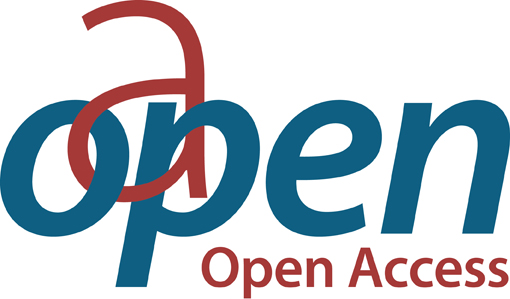Virtuell virkelighet i undervisning
Lavkostnadsløsninger for læring i høyere utdanning
| dc.contributor.author | Cyvin, Jakob B. | |
| dc.contributor.author | Akbarinejad, Tahmineh | |
| dc.contributor.author | Fjærtoft Lønne, Tuva | |
| dc.contributor.author | Seland, Astrid | |
| dc.contributor.author | Skottun, Ane | |
| dc.contributor.author | Callanan, Martin | |
| dc.contributor.author | Stebergløkken, Heidrun | |
| dc.contributor.author | Cyvin, Jardar K. | |
| dc.contributor.author | Magne Grindeland, John | |
| dc.contributor.author | Pálsdóttir, Auður | |
| dc.contributor.author | Storbæk, Oda | |
| dc.contributor.author | Hyldmo, Birgitte | |
| dc.contributor.author | Fossaas Bjordammen, Daniel | |
| dc.contributor.author | Svardal, Runa | |
| dc.contributor.author | Eerola, Malin | |
| dc.contributor.author | Engen Økland, Karen | |
| dc.contributor.author | Nubdal, Marte | |
| dc.contributor.author | Kalland, Rune | |
| dc.contributor.author | Prasolova-Førland, Ekaterina | |
| dc.contributor.author | Flemsæter, Frode | |
| dc.contributor.author | Mørtsell, Tonje | |
| dc.contributor.editor | Cyvin, Jakob B. | |
| dc.date.accessioned | 2025-03-20T14:51:25Z | |
| dc.date.available | 2025-03-20T14:51:25Z | |
| dc.date.issued | 2025 | |
| dc.identifier.uri | https://library.oapen.org/handle/20.500.12657/100207 | |
| dc.description.abstract | Virtual reality (VR) was once science fiction, but now it is on its way to becoming commonplace. VR has great potential for realistic visualization, so what are the obstacles we encounter when using this technology in teaching at the higher educational level, and how can we overcome them? What are its greatest benefits, practical, economic and pedagogical? What do students think about VR for learning, and what does the existing literature say? When should we use this technology, and when should it not be used? Virtual Reality in Teaching: Low-Cost Solutions for Learning in Higher Education lays research-based groundwork for readers to be able to use VR for learning themselves. The anthology presents articles on the use of different types of VR technology in subjects such as biology, science and geography in teacher education, as well as archaeology, occupational therapy and psychology. Stemming from the interdisciplinary project ‘VR-Learn at the Department of Geography and Social Anthropology’ at NTNU, where researchers have explored the use of VR for learning in a number of subjects for five years, the anthology is a collection of the research carried out in the project. The book will be of interest to those involved in higher education, particularly teachers and students in associate degree programs in geography, social studies, and other natural sciences, primary school teacher training (science and social studies), or occupational therapy education. The texts are also suitable for readers with a general interest in technology and education. Its editor, Jakob Bonnevie Cyvin, is a geographer and PhD candidate with research experience in activating learning methods, especially the use of location-based aids, and has led the VR-Learn project. | en_US |
| dc.language | English | en_US |
| dc.language | Norwegian Bokmål | en_US |
| dc.subject.classification | thema EDItEUR::U Computing and Information Technology::UY Computer science::UYV Virtual reality | en_US |
| dc.subject.classification | thema EDItEUR::J Society and Social Sciences::JN Education::JNA Philosophy and theory of education | en_US |
| dc.subject.classification | thema EDItEUR::G Reference, Information and Interdisciplinary subjects::GP Research and information: general::GPS Research methods: general | en_US |
| dc.subject.other | virtual reality, learning, higher education, 360 photo, fieldwork, virtuell virkelighet, læring, høyere utdanning, 360-foto, feltarbeid | en_US |
| dc.title | Virtuell virkelighet i undervisning | en_US |
| dc.title.alternative | Lavkostnadsløsninger for læring i høyere utdanning | en_US |
| dc.type | book | |
| oapen.abstract.otherlanguage | Virtuell virkelighet (VR) var en gang science fiction, men er i dag på vei til å bli hverdagsteknologi. VR har stort potensial for virkelighetsnær visualisering, men hvilke barrierer møter vi ved bruk av teknologien i undervisning i høyere utdanning, og hvordan kan disse overkommes? Hva er de største gevinstene, både praktisk, økonomisk og pedagogisk? Hva synes studentene om VR for læring, og hva sier eksisterende litteratur? Når bør vi ta i bruk og ikke ta i bruk teknologien? Med Virtuell virkelighet i undervisning: Lavkostnadsløsninger for læring i høyere utdanning får leserne et forskningsbasert grunnlag for selv å kunne ta i bruk VR for læring. Antologien presenterer artikler om bruk av forskjellige typer VR-teknologi i fag som geografi, biologi, naturfag og geografi i lærerutdanningen, arkeologi, ergoterapi og psykologi. Boka har sitt utspring i det tverrfaglige prosjektet VR-Learn ved Institutt for geografi og sosialantropologi på NTNU, der vi gjennom fem år har utforsket bruken av VR for læring i en rekke fag. Antologien samler forskningen gjennomført i prosjektet. Boka retter seg mot høyere utdanning, og særlig mot undervisere og studenter i lektorutdanningen i geografi, samfunnsfag og naturfag, grunnskolelærerutdanning (naturfag og samfunnsfag), eller ergoterapiutdanning. Tekstene egner seg også for lesere med generell interesse for teknologi og utdanning. Redaktør for antologien er Jakob Bonnevie Cyvin. Han er geograf og ph.d.-kandidat med forskningserfaring innenfor aktiviserende læringsmetoder, særlig bruk av stedsbaserte hjelpemidler, og har ledet prosjektet VR-Learn. | en_US |
| oapen.identifier.doi | 10.23865/cdf.242 | en_US |
| oapen.relation.isPublishedBy | bf7b42a4-6892-42e3-aaf8-8f32c8470a8b | en_US |
| oapen.relation.isbn | 9788202874421 | en_US |
| oapen.relation.isbn | 9788202878078 | en_US |
| oapen.relation.isbn | 9788202878054 | en_US |
| oapen.relation.isbn | 9788202878061 | en_US |
| oapen.pages | 220 | en_US |
| oapen.place.publication | Oslo | en_US |
| oapen.remark.public | Funder name: HK-dir |

